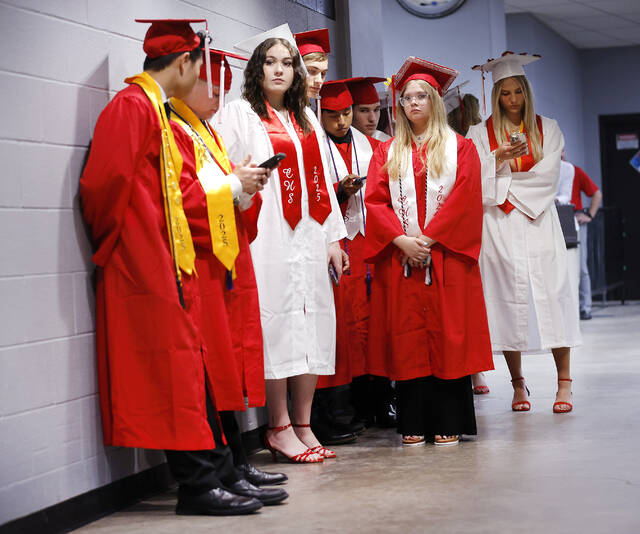As Penn State faces scrutiny over its decision to close seven Commonwealth campuses by 2027, it joins a growing list of land-grant institutions across the country facing financial strain, campus downsizing and state funding cuts.
Though each university’s crisis stems from its own unique blend of local pressures and political realities, the broader trend reflects something more systemic: a shrinking public commitment to the land-grant mission.
From Wisconsin to Alaska, universities created by the Land-Grant College Act of 1862 are reevaluating what it means to serve their state — and what they can realistically afford.
Penn State’s restructuring effort — which includes nearly $90 million in budget reductions or reallocations for the 2025-26 fiscal year — is not isolated. The decision to close campuses like DuBois and Shenango comes in response to steep enrollment declines, aging infrastructure and rising operating costs.
Administrators have emphasized that these campuses serve less than 4% of Penn State’s undergraduate students but consume a disproportionate share of resources.
Similar reasoning has driven tough choices elsewhere.
In Wisconsin, the state’s flagship land-grant institution has steadily reduced its regional footprint. The University of Wisconsin (UW) System, once spanning two-year colleges across the state, has closed or announced the closure of five branch campuses in recent years.
The reasons resemble those in Pennsylvania: declining enrollments, rural depopulation and declining investment in higher education from state legislatures. Wisconsin’s current financial strain is compounded by years of frozen tuition and a $300 million state funding reduction in 2015, which have limited the system’s ability to offset prior funding reductions.
UW officials have found themselves in legal disputes over federal grant terminations, further exacerbating budget shortfalls and program delays.
The University of Alaska (UA) system, which serves many remote and indigenous communities, has faced targeted federal grant suspensions totaling about $5.4 million — including a 10-year, $46 million Arctic research grant that is currently on hold.
University leadership has warned that uncertainty at the federal level may lead to reductions in staffing, hiring, or travel although systemwide disruption is expected to be limited.
As a land-grant institution operating across a vast and sparsely populated state, UA continues to face structural challenges in maintaining access and stability amid constrained funding.
The University of Tennessee, despite operating in a region where public universities often receive stronger legislative backing, has not been immune to financial strain. Earlier this year, the system lost nearly $38 million in federal grants, with the Institute of Agriculture bearing the brunt of the cuts.
As a key driver of Tennessee’s largest economic sector, the institute now faces uncertainty surrounding several critical research initiatives, including agricultural innovation and rural health programs.
Taken together, the experiences of Tennessee, Wisconsin, Alaska and others show that land-grant institutions across the country are adjusting to shifting federal priorities, reduced state investment and changing student demographics.
These institutions, many of which were designed to serve rural or economically underserved populations, are now confronting hard choices about how to fulfill their public missions with fewer resources.
At Penn State, those pressures have been increasingly visible. In addition to reallocating nearly $90 million in its Education and General budget for 2025-26, the university has made significant cuts to academic programs.
While Penn State hasn’t seen abrupt federal grant terminations like those in Tennessee and Alaska, it has joined legal efforts to push back against new limits of federal research reimbursements, which could impact long-term funding for faculty-led projects.
Still, what sets Penn State apart isn’t necessarily the scale of its cuts, but how those decisions have been framed. President Neeli Bendapudi has positioned the campus closures as a forward-looking strategy — not a setback, but a “pivotal moment” in redefining how the university serves the Commonwealth. The goal is to focus on sustainability and student success rather than spreading resources too thin.
However, the response from students, faculty and community members has been anything but quiet. Many argue the closures will limit access to higher education in regions that already struggle with affordability and infrastructure.
Concerns about equity have also been raised, especially for first-generation and nontraditional students who rely on campuses close to home. Similar fears have surfaced in Wisconsin and Alaska, where budget decisions risk deepening educational gaps between urban and rural areas.
For Penn State, these choices may mark the beginning of a longer transformation — one that other land-grant institutions are also being forced to consider. The model that sustained public higher education through the 20th century is under pressure.
While every institution’s path forward will look different, the financial and political realities behind these changes are becoming increasingly difficult to ignore.
MORE NEWS CONTENT

7 Commonwealth campuses are slated to close by spring 2027 following a 25-8 vote from Penn S…
























 Tim Legler can’t think of a better offensive matchup for OKC than the Pacers
Tim Legler can’t think of a better offensive matchup for OKC than the Pacers 










































 | NBA Classic Game
| NBA Classic Game






